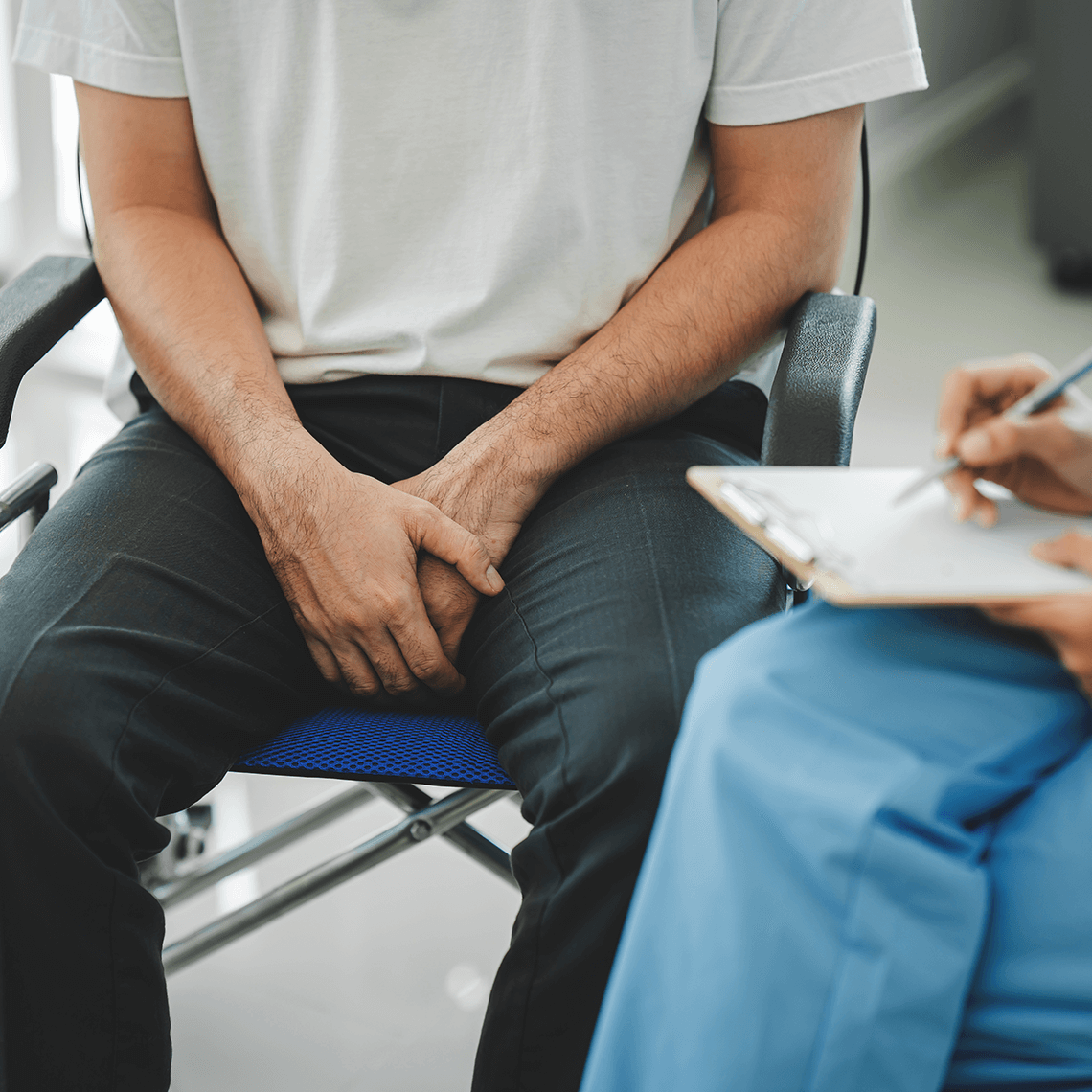Podcast
Money for Safety: CRICO Pushes Hard to Prevent Medical Harm
Jun 30, 2014
Duration: 10:13
This podcast is an episode of Patient Safety Updates (now Safety Net). You can find other episodes and subscribe using the links to the right.
Learn how CRICO’s grants spur innovation in patient safety across the Harvard network.
Commentators:
|
Richard Balaban, MD |
Carol Keohane, MS, RN |
Transcript
A man on an operating room table receives an overdose of medication. A baby on the labor and delivery unit is deprived of oxygen during birth. A woman learns from her primary care doctor that she has advanced cancer that was discovered late.
For decades, the Harvard medical system has targeted events like these for research and intervention. Much of these efforts have been channeled through a little-known patient safety grant program that sprang from Harvard’s medical malpractice insurance company, CRICO. This year, CRICO is administering a $2 million-plus portfolio across 12 new projects. Carol Keohane, MS, RN, is Assistant Vice President for the CRICO Risk Management Grant program, which derives its focus from extensively coded malpractice claims data from across the country.
“It’s changed over time where we see the risks really emerging in the ambulatory/primary care area so we’ve tried to keep in step with that. Our funding this year is much more focused in the ambulatory space, much of it heavily focused this year on primary care and primary care redesign and understanding some of the risks in that area so that we can help mitigate some of the problems that we’re seeing and really help with care redesign to make it a much safer experience for patients in the primary care setting.”
Keohane says that combining malpractice data with medical innovators at Harvard has repeatedly proven fruitful. She points to team training and surgical safety programs that have led to a reduction in malpractice losses and insurance premiums for some specialties.
“We’ve also been working very closely with our member institutions and organizations to try to help them build infrastructures to support patient safety in the ambulatory environment, which is a new area focus for us over the last several years, and it’s not enough to just take the tools that we’ve developed in the inpatient side because they are not completely translatable to the ambulatory environment. So it’s required a redirection of some of those efforts and training that is unique to the ambulatory space.”
[New Voice: grant recipient Jennifer Haas]
“As a primary care provider, failure to diagnose breast cancer is an important source of malpractice liability.”
Dr. Jennifer Haas works at Brigham and Women’s Hospital and is the recipient of a CRICO grant this year. Dr. Haas is looking closely at how breast density can be a risk factor for breast cancer. Her study will also explore how to help women with dense breast tissue understand the risks of missed cancers and the importance of follow-up recommendations from their doctor. Proposed legislation in Massachusetts follows laws in other states requiring that mammographic breast density be reported to patients.
“Mammography is the main test that we have available for breast cancer screening, but there is a growing body of literature suggests that it is a very imperfect test, both with false positives as well as false negative diagnoses… And the hope is that by the end of the project we can develop a prototype of sort of talking points or points that could be listed in a radiology report or in a letter to a patient about how to inform them about their breast density findings and how they should think about that in terms of the risk as well as their need for ongoing screening, either with mammography or with additional tests.”
Another 2014 project seeks to improve hospital-to-home transitions for at-risk young patients, usually with substance abuse or mental health problems. These patients typically score low on measures of personal engagement in their care. This results in poorer outcomes and expensive hospital care in this population. Dr. Richard Balaban is the lead investigator from Cambridge Health Alliance:
“So the focus of our project is, first of all, to see if we are able to improve patients’ activation levels in the peri-discharge period; and if we can, will that lead to improved outcomes for these patients?”
Dr. Balaban’s team will assign a transition nurse to coach each patient prior to discharge, and participate in out-patient follow-up. The researchers will measure the patient’s engagement score to see if they are involved in outpatient services more, and re-admitted less.
Young patients are also the focus of a 2014 project at Boston Children’s Hospital, to prevent medication errors. Dr. Kate Humphrey is a pediatric hospitalist there, and a patient safety and quality fellow through Harvard Medical School. Boston Children’s has already done a number of things to reduce med errors, including the use of computerized order entry, bar codes, and decision support for prescribers.
“So really our goals of the study are to evaluate the current system, specifically looking at drug/drug interactions: how those alerts populate, how to optimize that system, reduce overall alert fatigue, and provider cognitive load to help decrease medical errors and improve efficiency within the system.”
Alert fatigue and the temptation to ignore electronic alarms, says Humphrey, is a significant risk to patient safety.
“Oh my gosh, it is a huge, huge burden for providers. When they are actually going into the system, there’s a lot of stressors that go on. They’re focused on the patient; they are interacting with their bedside clinicians, whether it’s the nursing staff, the respiratory therapist; they have other distractions that are going on. And then we’re also adding both additional safety measures by having alerts populate that can look at drug interactions, medication and drug allergies and dose range checking; but at the same time that also impairs the physician’s ability to actually prescribe the medication for the patient.”
Another 2014 project in the CRICO grant portfolio goes after C-section rates, as more surgeries to deliver babies introduce more surgical risks. The research will help test a theory:
“Part of the reason why cesarean deliveries happen is that, honestly, it’s just a way of getting babies born more quickly. And when the clinical decision makers have really high workloads, they have a stronger incentive to just kind of expedite the process by doing the cesarean.”
Dr. Neel Shah is an OB/Gyn at Beth Israel Deaconess Medical Center in Boston. Dr. Shah’s project will test that theory, and its corollary that the incentive to perform a C-section prematurely is influenced by heavy workloads and inefficient use of resources.
“Typically there is a handful of people in charge of managing where patients go and how full the labor floor feels. It’s typically a nurse in charge and a handful of clinicians. And the idea behind our project is to learn from the people who are really good at managing those resources and really good at alleviating the bottlenecks when they happen and kind of embed that into a decision support tool so that when really busy clinicians on the labor floor are feeling really pressured to offset their workload, they have some guidance on how to do that in ways other than maybe doing that C-section.”
Obstetrics is a long-time target area for patient safety interventions at Harvard, including intensive team training. The same is true for surgery, another specialty with high-severity malpractice claims. An investigation and intervention project to go after power differentials and improve communication in surgical teams is also receiving funding from CRICO. Lead investigators are Dr. Cameron Wright of Massachusetts General Hospital, and Dr. Sara Singer. Dr. Singer is in the Health Policy and Management Department at the Harvard School of Public Health.
“The idea is that performing reliably safe surgery requires extensive information, information that is shared across individuals who work on the team delivering the surgery for the patients. So that starts before the case. It includes sharing information about case progress during the case, about concerns about the patient and the case, also during the case, and then reflecting on how they did after the case. So we’re interested in understanding how to deliver reliably safe care by ensuring that this information sharing occurs.”
Dr. Singer says CRICO’s support gives them the resources to do a deeper exploration of underlying issues that keep lower-level personnel from speaking up during surgeries. She points to another advantage of research funded through an institution like CRICO that is owned by so many different Harvard shareholders:
“The other thing that it’s allowing us to do is to pursue a pretty unique interdisciplinary collaboration that we rarely have the opportunity to pursue, which is a collaboration between faculty at Harvard Business School, Harvard School of Public Health, Harvard Medical School and MGH, so that’s a really exciting piece about this project.”
Other projects for the 2014 cycle create online peer review sessions to improve documentation, collect data on physician factors that lead to missed colon cancers, and more effectively track pulmonary nodules that were discovered incidental to an initial chest study. Carol Keohane says the opportunities for real progress in all these areas come from a unique partnership between CRICO, the malpractice insurer, and its hospital shareholders:
“I think that that collaboration, that continued partnership with our member organizations, which I think is unique for an insurance company. We have them extremely engaged as not just stakeholders, but stakeholders engaged in the process and the decision making around where the funds should be directed and where the areas of highest risk are.”
About the Series
We’ve got you.
Our Safety Net podcast features clinical and patient safety leaders from Harvard and around the world, bringing you the knowledge you need for safer patient care.
Episodes
$1.5 Billion in Miscommunication: Medmal Data Report Finds Opportunities

Case Dismissed! Every Medical Defendant’s Dream Still Holds Some Nightmares

Expert: Communication Is Top Fix for Prostate Care Allegations


